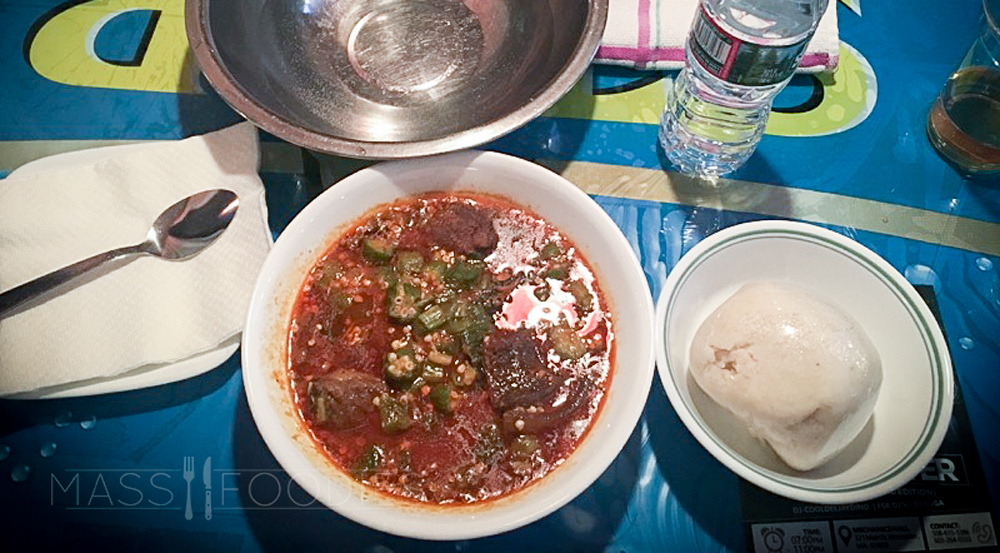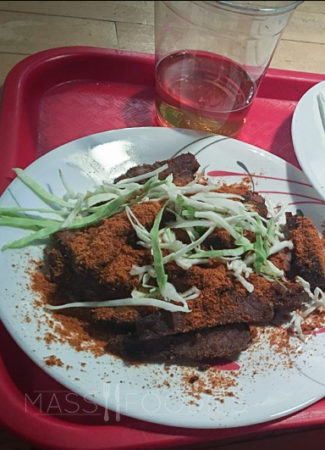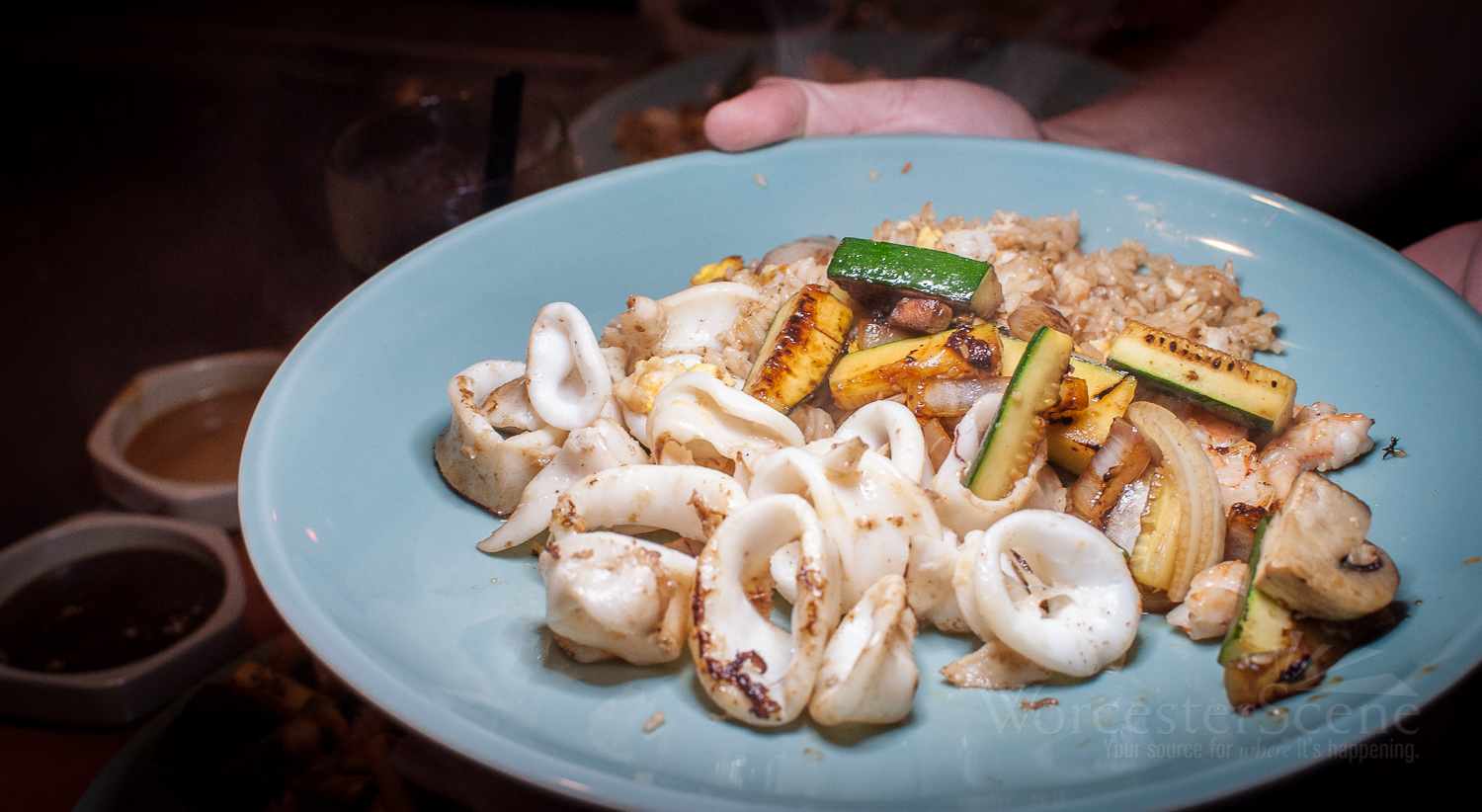
There is an old colonial, or perhaps more aptly imperial, saying: “If it can’t be burnt, boiled, or peeled, don’t eat it.” This was the basic health advice that was handed down to hundreds of thousands of British, German, Belgian, Spanish and Portuguese colonists as they set upon the rest of the world intent on making it more European. Thankfully this advice was largely forgotten upon seeing the cuisine wonders of the rest of the world. In this spirit of exploration I found Anokye Krom African American Restaurant at 687 Millbury Street in Worcester recently. Sitting at the bar will give you a truly stunning view of Route 146.
I came to Anokye Krom for the banku. Banku is described on the menu as “cornmeal balled up and okra soup.” It is found throughout Ghana but is the staple food of southern Ghana and is served with most meals there. It’s generally cornmeal and cassava dough that’s been fermented. In other regions, and even other African restaurants in Worcester, you’ll find it replaced by rice or some other starch depending on the climate. The okra soup and cornmeal is essentially the two pillars of this dish but anything else can be added. I ordered the banku with beef, tripe, cowfoot, and tilapia.
To give you a sense of how versatile this cornerstone is the menu offered this dish served with fried fish, or chicken wings, or chofi (turkey tail), or suya (grilled beef), or chicken.

I was just pouring my second bag of gin when I was tapped on the shoulder by a waiter pushing a small cart with my dinner on it. He led me to a table and set down a bowl of deep red soup, a bowl with what looked to be a clear plastic balloon full of grits, and a large metal mixing bowl of water. I was staring at the bowl of water wondering what in gods name its for when the waiter politely said, “it’s for your hands…to wash them.”
Ah.
It was then the pieces fell into place. The balloon full of grits was the banku. I unwrapped it from the plastic and it generally held its shape. Think of a ball of day-old Cream of Wheat, but warm and more pliable in your hands. After washing your hands you take a small amount of the banku in your hand and then start working with the soup, trying to pull off bits of talapia or beef to scoop into your mouth with the banku. The broth itself was really quite good. Thank god they brought a spoon.
Eating with your hands is standard in many other parts of the world and the technique can be hard to figure out. Here’s my two pieces of advice: 1) treat your fingers like a shovel, use your thumb to move the food off your hand and into your mouth. 2) have fun with it and enjoy getting a little messy.
Banku and the okra soup serves as an easy way to stretch a meal through inexpensive starches; the same concept as a dumpling or matzo ball. Proteins like meat and fish are expensive but a soup with a cheap starch can make one piece of meat last for a couple of days instead of just one meal. As I sat staring at the baseball sized ball of banku I knew that there was no way I could finish it all. To get through it all, I would need at least one more diner if not two. The tang of the banku reminds you that it’s fermented. Originally this was for purposes of preservation but today, especially in Worcester, the fermentation process is there likely for reasons of taste. It’s reminiscent the tartness of butter milk.
For those of you who are unfamiliar with okra do note that it’s truly an experience. West Africa, specifically parts of Ghana, is one of the major worldwide producers of okra. The shell itself resembles a jalapeño pepper but contains pale round seeds. When cooked the consistency of the shells breaks down and creates a texture that has been described “slimy” and conversely “silky.” I lean towards the slimy side. It’s certainly a consistency that takes some getting used to.
I despise the word “authentic” as much as I do the word “fusion” when attached to food or a restaurant or an experience. Most every country and culture has a form of the ravioli or wonton or dumpling or version of banku. But I will say that the flavors and textures, the snap of the fermented cornmeal and cassava, the texture of the okra, and the slow heat of the spices, makes this dish definitively Ghanaian.


